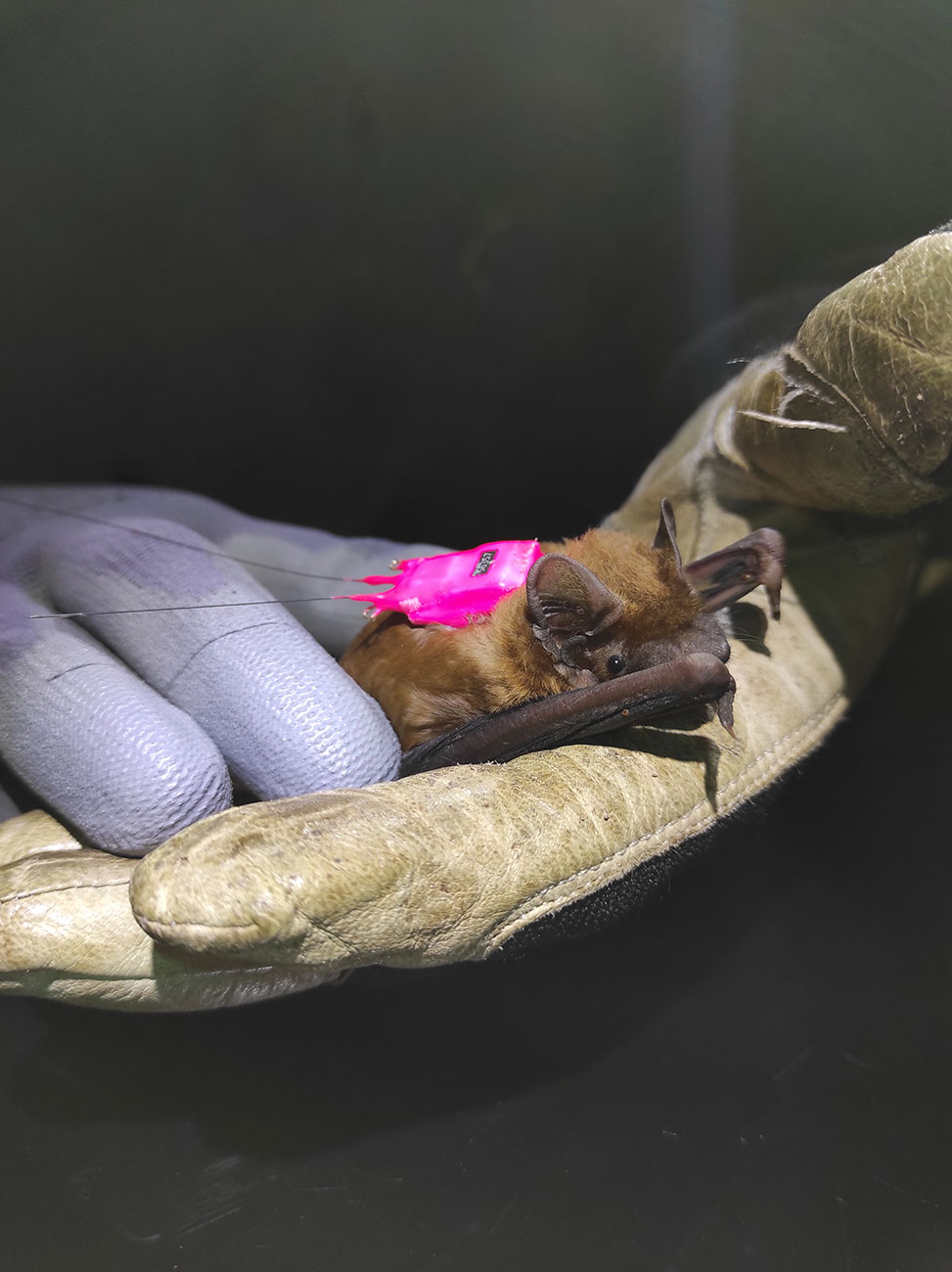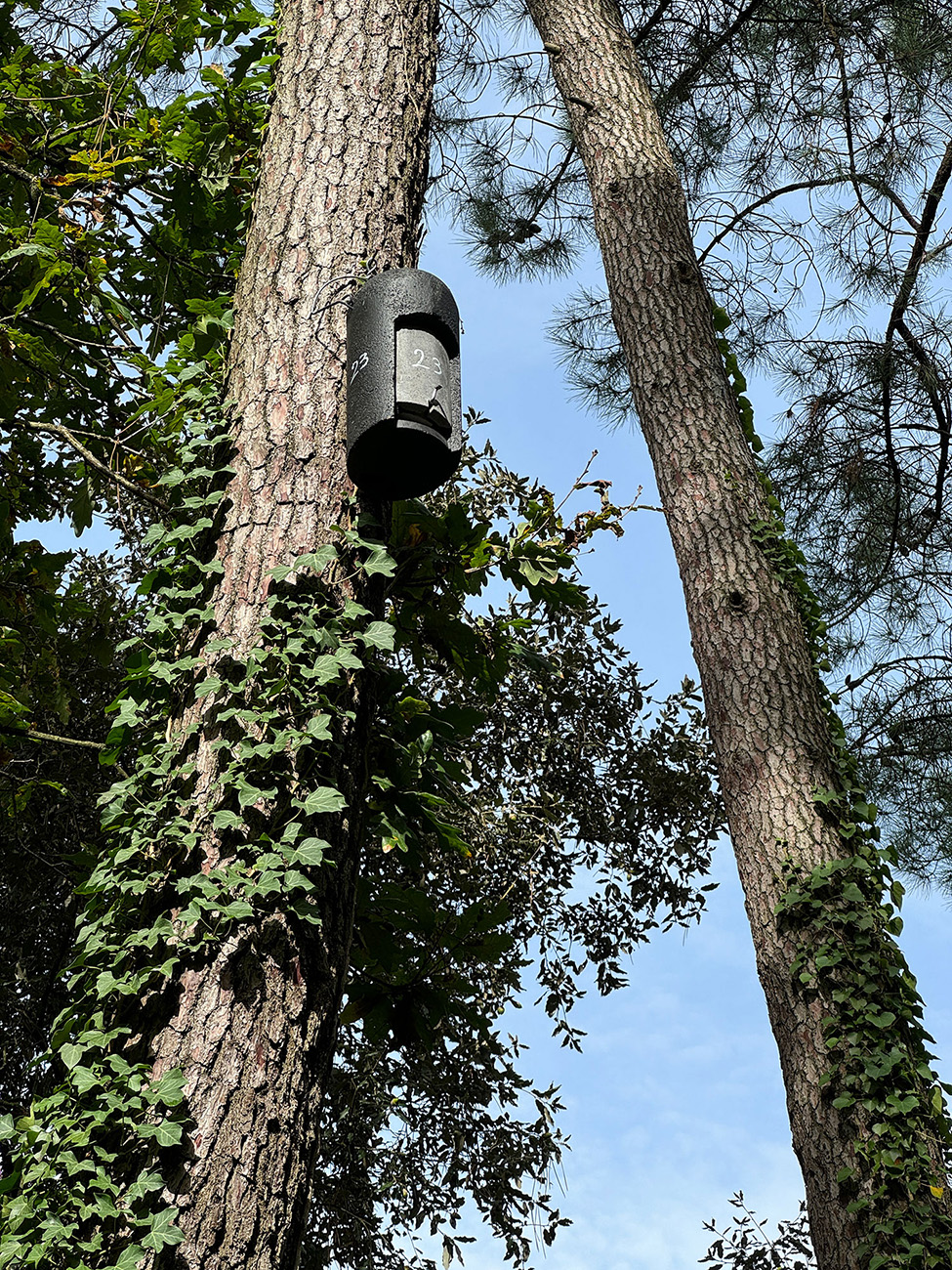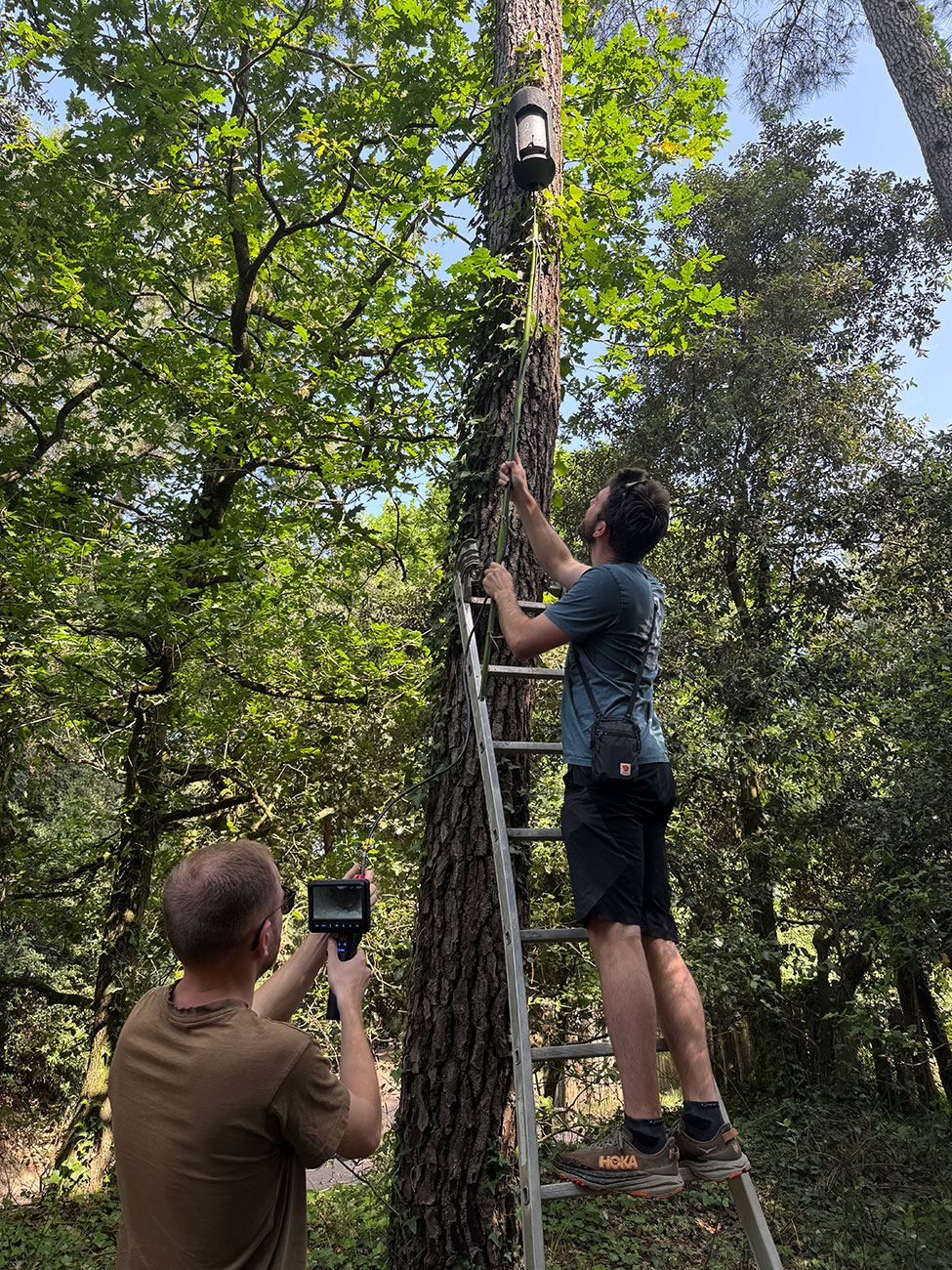Nature Environnement 17

In Charente-Maritime, a local environmental protection association, Nature Environnement 17, has been developing a research program for several years aimed at improving knowledge of the ecology of the Common Noctule (Nyctalus noctula, classified as Vulnerable on the National and Regional Red Lists), relying in particular on the monitoring of individuals equipped with GPS beacons.

With the support of Palmyre Conservation, Nature Environnement 17 is preserving the species on the Presqu’île d’Arvert and surrounding areas by installing artificial roosts. It plans to install around fifty roosts throughout the Presqu’île to facilitate the anchoring and monitoring of noctules. Twelve artificial roosts have already been installed at the zoo, and four more are expected to follow soon. The others roots are located in wooded areas in the surrounding communes and on private sites. The program includes regular monitoring during the various phases of the bats' life cycle (spring, summer, and fall) to verify the condition of the roosts and whether they are occupied.

Artificial roost at the Zoo de La Palmyre © F. Perroux 
Control of an artificial roost by NE17 © F. Perroux
On a national level, bat populations are unfortunately declining, and human-induced pressures are increasing: habitat degradation, light pollution, pesticide use that leads to the disappearance of the insects on which the bats feed, disturbances that generate stress, construction work that causes the disappearance of roosts, collisions or barotrauma due to wind turbines, climate change, the disappearance of wetlands, etc.
These small mammals therefore deserve active mobilization, not only because they are key species in the environment but also because their conservation helps protect many other vulnerable species.